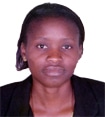
Women Demand More Positions of Power
Sibongile Mpofu
Bulawayo, Zimbabwe - Aug 2007
The Southern African Development Community (SADC) Gender Unit has set itself a task to increase the current target of at least 30 percent women in decision making by 2005 to 50 percent by 2020. However, two years after the deadline very few countries have achieved the initial target. In fact some have taken a few steps backwards.
Another task is to elevate the SADC Declaration on Gender into a protocol to make it legally binding and compel nation states to put in place gender-sensitive legislation. Only two countries (South Africa and Mozambique) have so far managed to achieve existing SADC targets. In South Africa women now constitute about 29.8 percent of the number of parliamentarians.
Zimbabwe still lags behind at a meager 14 percent following a drop in the number of women parliamentarians in the 2000 parliamentary election from 21 to 15 in a 150 seat parliament.
While women’s participation in politics and hence decision-making bodies such as local government and civil society has improved in most countries women are still concentrated in the more traditional female-biased professions. Programmes of action are currently being formulated by women lobby groups as part of their contribution to the regional campaign.
Women in Politics Support Unit (WiPSU) in conjunction with The Women’s Trust recently held a Public Meeting on Zimbabwean Women and the 2008 Election. The event aimed to intensify the 50/50 campaigns and also find strategies on how to increase women’s representation in decision making at national level.
Also, women parliamentarians in the region are currently holding national meetings in preparations for the 2007 SADC Heads of State summit to be held in Lusaka, Zambia. In Zimbabwe, women legislators recently held a caucus to discuss the SADC draft protocol on gender. Speaking at the meeting, Deputy Minister for Women Affairs, gender and Community Development, Abigail Damasane said contributions arising from the meeting would form the basis of Zimbabwe’s input into the protocol.
An audit conducted by civil society organisations in 2006 showed that while considerable progress has been made since the signing of the Declaration several gaps remain. For example, measures for addressing gender violence are still patchy and inadequate with new forms of gender violence on the rise, such as trafficking. According to Gender Links, one of the organizations involved in the audit of the SADC Declaration on Gender and Development, more lobbying needs to be done to bring parity between men and women in all spheres of local governance.
The organization revealed that on average women comprise 20 percent of the region’s legislators, second only to Scandinavian countries where the average is 38 percent. “While it took the Scandinavians 60 years to achieve this, SADC has shown that rapid change is possible,” said Colleen Lowe Morna, executive director at Gender Links.
She said “while there has been some progress in raising awareness and challenging gender stereotypes in the media, the battle to change mindsets is still far from won. There are still glaring disparities in virtually every country between customary law and modern codified law when it comes to women’s rights and these disparities are not addressed in Constitutions,” she added.
The Africa Union has also come out in favor of gender parity but it is yet to set targets for when this is to be achieved. The draft protocol seeks to ensure that member states adopt necessary strategies and programmes such as affirmative action and laws that promote equality for women.
Other articles deal with health, reproductive rights, HIV/AIDS, peace and conflict resolution, among others.
SADC governments have come to the realization that integration and mainstreaming of gender issues into the SADC programme of action is crucial to the sustainable development of the region.
